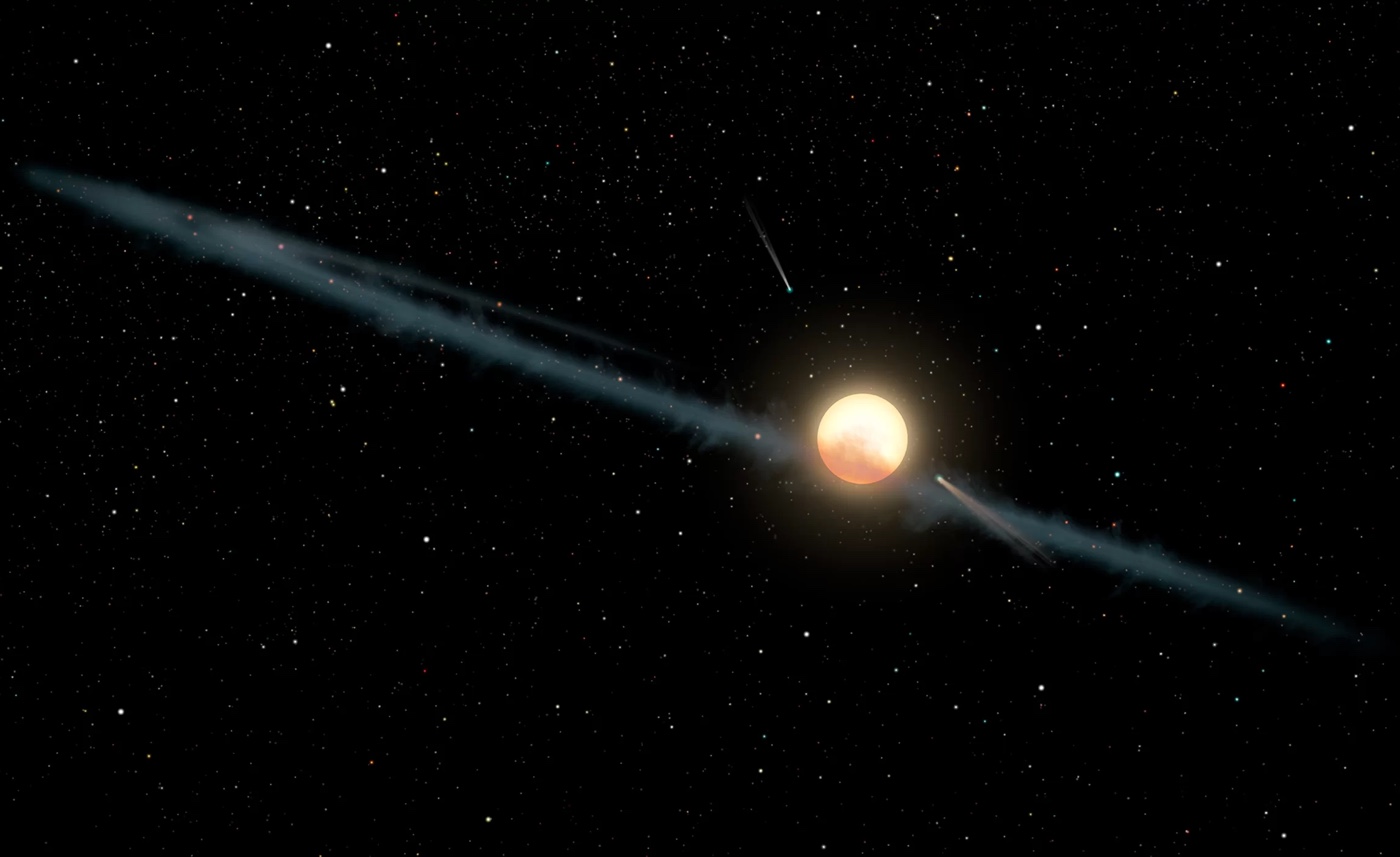'Alien Megastructure' Star May Not Be So Special After All
More mysteriously dimming stars have been spotted.

A mysterious star whose repeated bouts of darkening might be due to "alien megastructures," according to some researchers' conjectures, may now have more than a dozen counterparts that display similarly mystifying behavior, a new study finds.
Further research into all of these stars might help solve the puzzle of their bewildering flickering, the study's author said.
In 2015, scientists noticed unusual fluctuations in the light from a star named KIC 8462852. This otherwise-normal F-type star, which is slightly larger and hotter than Earth's sun, sits about 1,480 light-years from Earth, in the constellation Cygnus.
Related: 13 Ways to Hunt Intelligent Aliens
When the researchers analyzed data from NASA's Kepler space telescope, astronomer Tabetha "Tabby" Boyajian, then at Yale University, and her colleagues found dozens of odd instances of KIC 8462852 dimming by up to 22%, with such dips lasting anywhere from a few days to a week. These events did not appear to follow any pattern and seemed far too substantial to be caused by planets or dust crossing the star's face.
These analyses of KIC 8462852 — now nicknamed "Boyajian's star" (formerly Tabby's star) after its discoverer — raised the possibility that astronomers had detected signs of intelligent alien life. Specifically, researchers have suggested that the star is surrounded by a Dyson sphere, a hypothetical megastructure that is built around a star to capture as much of its light as possible. Mathematician and physicist Freeman Dyson suggested that such megastructures could help power an advanced civilization. (Science fiction often depicts Dyson spheres as solid shells around stars, but the megastructures also could be globular swarms of giant solar panels.)
The megastructure hypothesis is near the bottom of most astronomers' lists these days when it comes to Boyajian's star, however; further analyses have pointed to more prosaic explanations, such as clouds of dust or comet fragments. Still, scientists have not yet nailed down the precise cause of the odd dimming. The answer remains elusive in part because Boyajian's star seemed unique; there were no known counterparts to provide additional clues that might help researchers solve this cosmic mystery.
Get the Space.com Newsletter
Breaking space news, the latest updates on rocket launches, skywatching events and more!
Now, study author Edward Schmidt, an astrophysicist at the University of Nebraska-Lincoln, suggests that he may have discovered more than a dozen stars like Boyajian's star.
Schmidt looked for counterparts of Boyajian's star using software that searched for analogous dimming events from about 14 million objects with varying brightness monitored in the Northern Sky Variable Survey from April 1999 to March 2000. He then followed up on promising candidates by examining their long-term behavior, using data from the All-Sky Automated Survey for Supernovae, ruling out sources whose dimming could be caused by conventional explanations such as an eclipsing companion star or some intrinsic variability in brightness.
Schmidt identified 21 stars that showed possibly unusual dimming. These fell into two distinct categories: 15 were "slow dippers" that dimmed at rates similar to Boyajian's star, and six were "rapid dippers" that showed even more extreme variability in their dimming rates.
"The thing that surprised me the most were these stars that had so many dips, the ones I called 'rapid dippers,'" Schmidt told Space.com. "I expected more occasional dips like Boyajian's star."
Further analysis using data from the European Space Agency's Gaia space observatory found that these potential dippers tended to be either conventional "main-sequence" stars with about the same mass as the sun or red giant stars with about twice the sun's mass. The slow and rapid dippers are seen in both groups, which may suggest that they represent varying degrees of the same mechanism, Schmidt said.
Schmidt noted that the Northern Sky Variable Survey he searched for potential counterparts of Boyajian's star did not contain records of Boyajian's star itself darkening during the year of data in that catalog. This highlights how astronomers may easily miss stars that can darken in this manner if they look only at catalogs that monitor stars for relatively short intervals of time.
"We're obviously missing some of these stars because of the catalogs we have," Schmidt said. "By looking at more catalogs, we may get a better picture of what's going on, even though it won't be a complete picture."
Future research that combs through more catalogs of stellar activity may turn up even more analogues of Boyajian's star, he said.
"I intend to try and follow up on the rapid dippers," Schmidt said. "One thing I noticed about them is that at least one seemed to be slowing way down in its dipping rate over the five years of coverage we have of it. It'd be interesting to find out what happened in its past, which may help give a better idea of what's going on with these stars."
Schmidt detailed his findings July 18 in The Astrophysical Journal Letters.
- 'Alien Megastructure' Ruled Out for Some of Star's Weird Dimming
- 10 Exoplanets That Could Host Alien Life
- 5 Bold Claims of Alien Life
Follow Charles Q. Choi on Twitter @cqchoi. Follow us on Twitter @Spacedotcom and on Facebook.
Join our Space Forums to keep talking space on the latest missions, night sky and more! And if you have a news tip, correction or comment, let us know at: community@space.com.

Charles Q. Choi is a contributing writer for Space.com and Live Science. He covers all things human origins and astronomy as well as physics, animals and general science topics. Charles has a Master of Arts degree from the University of Missouri-Columbia, School of Journalism and a Bachelor of Arts degree from the University of South Florida. Charles has visited every continent on Earth, drinking rancid yak butter tea in Lhasa, snorkeling with sea lions in the Galapagos and even climbing an iceberg in Antarctica. Visit him at http://www.sciwriter.us









